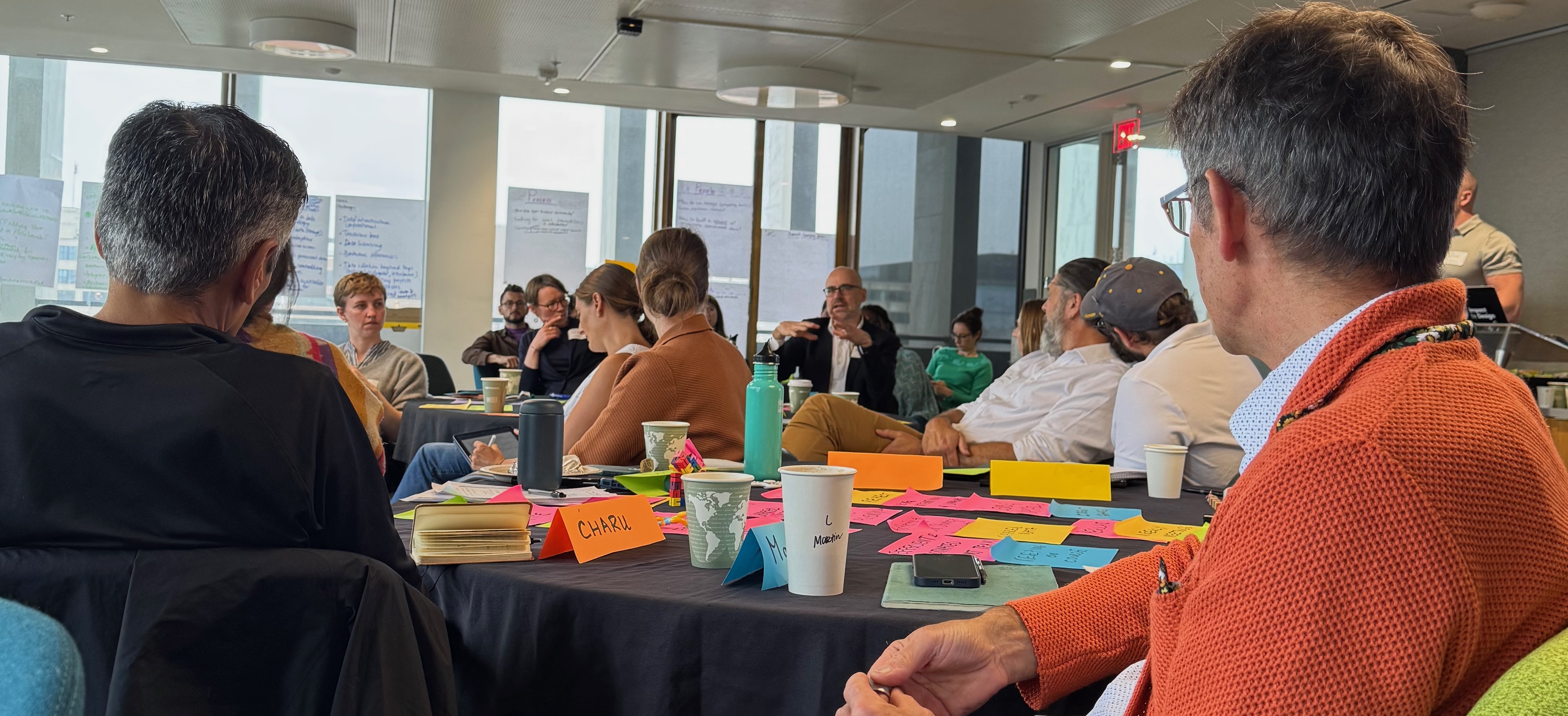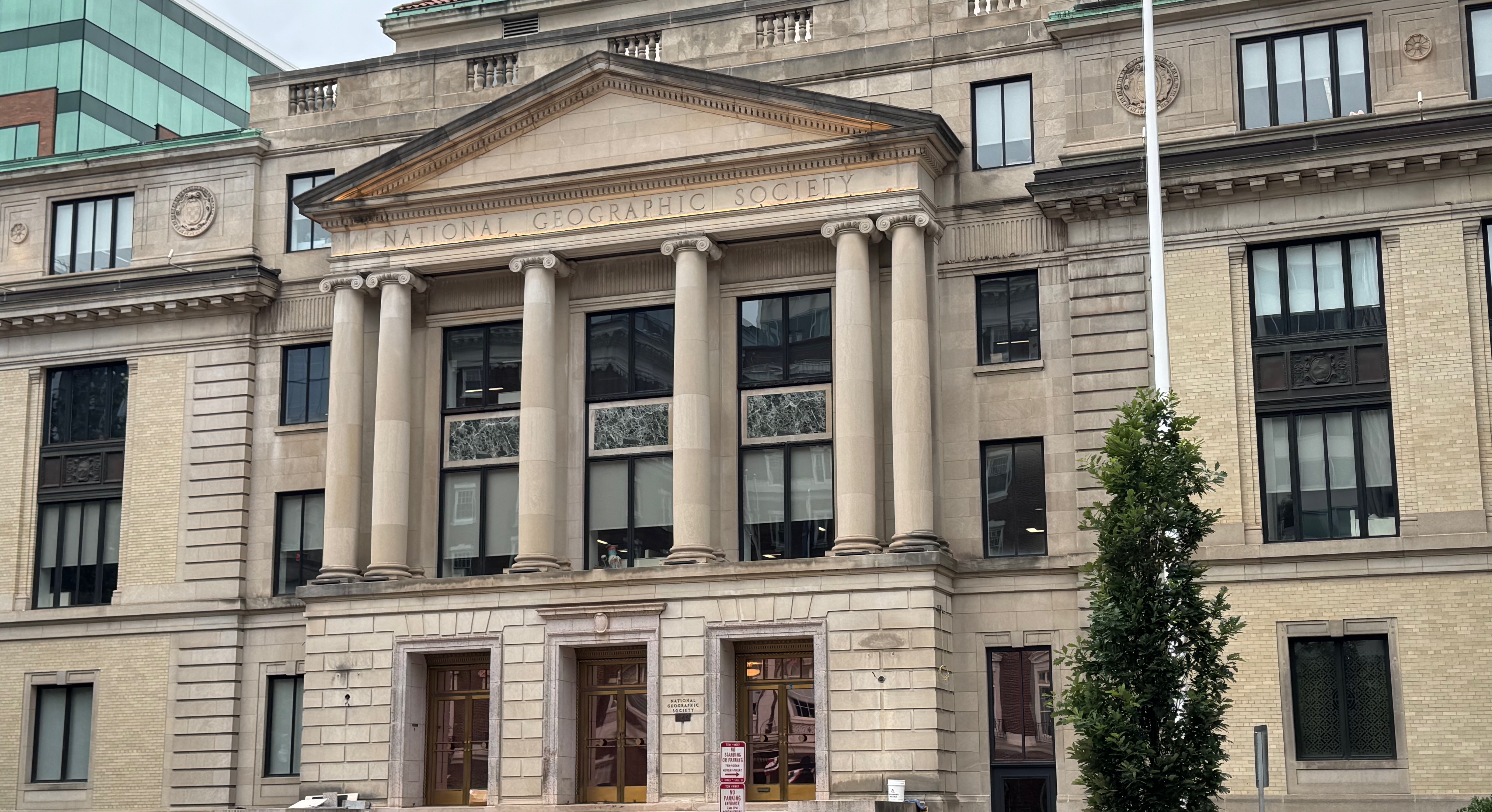Visiting National Geographic HQ and the Urban Exploration Project / Jun 2025 / DOI
I stayed on for a few days extra in Washington DC after the
[The UEP is a...] global-scale, community-driven initiative will collaboratively track animals across gradients of urbanization worldwide, to produce a holistic understanding of animal behaviour in human-modified landscapes that can, in turn, be used to develop evidence-based approaches to achieving sustainable human-wildlife coexistence. -- Christian Rutz's homepage
This immediately grabbed my interest, since it's a very different angle of biodiversity measurements to my usual. I've so far been mainly involved in efforts that use
The core challenge posed at the workshop was how to build momentum for the UEP's vision of fostering human–wildlife coexistence in the world's unprotected areas (often, this is areas near urban expansion zones like cities). The UEP idea sprang from Christian's earlier efforts after the pandemic on the COVID-19 Bio-Logging that built up a database of over 1 billion satellite fixes for ~13,000 tagged animals across ~200 species. The lead student on that work,

The workshop itself wasn't fully public (not because it's secret, but just because the details are still being iterated on), so here are some high-level takeaways from my conversations there...
Movebank for GPS tracking
I've used iNaturalist and OpenStreetMap extensively for wildlife occurrence and urban data, but I'm less familiar with how animal movement data is recorded.
Unlike most other biodiversity data services though, MoveBank data is not immediately made public (due to the sensitivity of animal movements), but is licensed to the user that made it. For that reason, it's less of a "social" service than iNaturalist, but still has a staggering 11 million records added every day. This data is then fed into GBIF, although it is downsampled to a single record per day. Martin also indicated to me that they're considering federating Movebank to other countries, which is important as biodiversity data resilience was a hot topic in our

Storytelling about conservation actions
I was really struck by how deeply the National Geographic staff were thinking about and co-designing solutions for along with the academics involved. I got chatting to
These projects ranged from the Amazon River Dolphins (to understand aquatic health) over to cephalopod empathy) and many more. These gave me a new perspective on the importance of storytelling as a key mechanism to help connect the dots from conservation actions to people; something that I've been learning from

It's also worth noting that the NGS support goes beyond "just" filmmaking. Our own
The importance of hedgehogs
A lot of the discussion at the workshop naturally focussed on charismatic mammals such as the amazing work done by the Zambian Carnivore programme. However, I also had in mind the importance of addressing issues closer to home in the UK as well so that we didn't ignore Europe.
Luckily, before the workshop, I had grabbed a coffee with
I brought up UK hedgehog conservation at the NatGeo workshop, and then while down at Earthfest at Google a few days later I learnt from

I found the whole experience of visiting National Geographic inspirational, and not just because of the projects discussed. The walls of their HQ are full of incredible photographs of explorers all over the world, and a seemingly unbounded enthusiasm for exploring the unknown. I kind of thought I'd aged out on applying to become an explorer, but Kathy Ho has been encouraging me to apply, and the same was echoed by the lovely conversations with NatGeo staffers.
I'm therefore putting on my thinking hat on for what my Explorers project proposal should be, as I am on academic sabbatical next year and have more freedom to travel; suggestions are welcome if you see me at the pub!

References
- Madhavapeddy (2025). What I learnt at the National Academy of Sciences US-UK Forum on Biodiversity. 10.59350/j6zkp-n7t82
- Madhavapeddy (2025). We become Junior Rangers at Shenandoah. 10.59350/d27v1-5tk68
- Ellis-Soto et al (2023). A vision for incorporating human mobility in the study of human–wildlife interactions. Nature Ecology & Evolution. 10.1038/s41559-023-02125-6